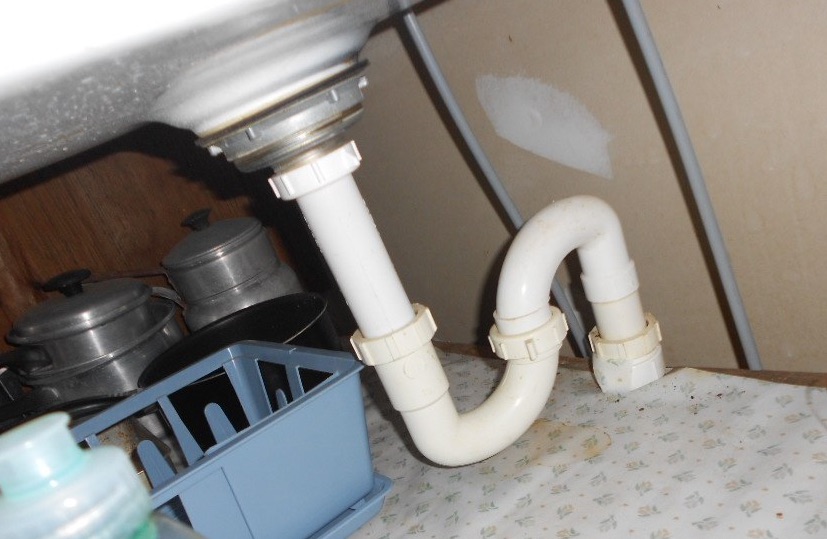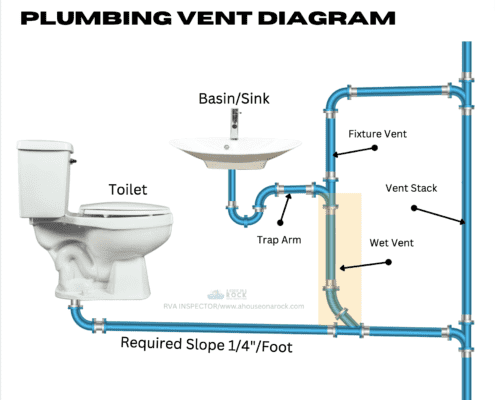The article further down on the subject of Why Plumbing Air Vents Are Important is definitely engaging. Have a go and make your own results.

Proper ventilation in plumbing systems is often forgotten, yet it is vital for preserving the capability and safety of your home's plumbing. Air flow assists control atmospheric pressure, avoid the build-up of dangerous gases, and make sure the reliable removal of waste. In this guide, we will certainly discover the importance of correct pipes air flow, how it works, and the benefits it gives your plumbing system.
How Ventilation Functions in Plumbing Systems
Air Pressure Regulation
Correct air flow keeps well balanced atmospheric pressure within the plumbing system. When water flows through pipelines, it displaces air. Without ample air flow, this displacement can create negative pressure, leading to slow drains or siphoning of water from traps, which can trigger unpleasant smells to leak right into the home.
Protecting Against Drain Gas Build-up
One of one of the most critical functions of pipes vents is to prevent sewage system gases, such as methane and hydrogen sulfide, from building up within the home. These gases can position severe health dangers and are extremely flammable. Vent pipes enable these gases to escape securely outdoors.
Assisting in Waste Removal
Ventilation aids in the efficient elimination of wastewater by preventing airlocks in the drain system. When air can move easily via the vents, it permits water and waste to flow efficiently via the pipes, minimizing the risk of clogs and backups.
Advantages of Appropriate Ventilation
Enhanced System Efficiency
Effectively aerated pipes systems operate a lot more efficiently, with fewer obstructions, faster draining, and much less strain on the pipelines. This performance extends the lifespan of the pipes system.
Improved Air Quality
By avoiding sewage system gases from entering your home, proper ventilation contributes to better indoor air top quality, making your living setting healthier and extra comfortable.
Preventing Water Damage
Adequate ventilation aids avoid water from being siphoned out of traps, which can result in sewer gases getting in the home and triggering water damages in time.
Actions to Make Certain Correct Ventilation
Consulting Pipes Codes
Constantly seek advice from local pipes codes when designing or changing your pipes system. These codes give the required guidelines for correct airing vent and ensure your system meets safety and security criteria.
Routine Assessment and Maintenance
Normal inspections can help recognize potential air flow issues before they come to be significant problems. Maintenance jobs, such as cleaning up vent pipelines and looking for blockages, are necessary for keeping the system in good working order.
Professional Installment
For brand-new installments or major modifications, it's important to employ a professional plumbing. They have the competence to ensure the ventilation system is properly made and installed according to code.
Comprehending Ventilation in Pipes
Ventilation in plumbing refers to the network of pipelines that allow air to flow via the drainage system. These vents serve numerous purposes, consisting of managing atmospheric pressure within the pipelines, avoiding drain gases from going into the home, and helping in the smooth flow of wastewater.
Sorts Of Pipes Vents
Main Heap Vent
The major stack vent, additionally referred to as the air vent stack, is the main air vent in a plumbing system. It expands from the main drain align through the roof, permitting gases to run away and fresh air to enter the system.
Branch Vent
Branch vents link to the major pile air vent and offer individual fixtures, such as sinks, toilets, and showers. These vents make sure that each fixture has ample ventilation to function properly.
Air Admission Valve (AAV).
An Air Admittance Shutoff (AAV) is a one-way shutoff that allows air to go into the pipes system without the need for a standard air vent pipeline extending with the roof covering. AAVs are typically utilized in restorations or locations where mounting a basic air vent is unwise.
Indicators of Poor Air Flow in Pipes.
Slow Draining Fixtures.
If your sinks, bathtubs, or commodes are draining gradually, it could be a sign of inadequate ventilation. Inadequate air flow can produce a vacuum cleaner effect, making it hard for water to drain effectively.
Gurgling Sounds.
Gurgling sounds coming from drains are commonly an outcome of air being drawn with water catches because of unfavorable stress in the pipelines. This is a clear indication of inadequate ventilation.
Undesirable Odors.
Drain odors inside your home are a warning that your plumbing system is not effectively ventilated. This could indicate that sewer gases are not being effectively aired vent outside, bring about possibly harmful conditions.
Common Ventilation Blunders.
Poor Vent Sizing.
Utilizing undersized vent pipelines can cause bad air flow and stress discrepancies in the system. It's necessary to utilize vents that fulfill the particular demands of your pipes system.
Improper Vent Placement.
Positioning vents too far from the components they offer can reduce their efficiency. Correct placement guarantees that air can stream openly and successfully through the system.
Ignoring Code Demands.
Building codes provide specific guidelines for plumbing air flow. Neglecting these codes can lead to a system that falls short to function properly and might lead to expensive repairs or carcinogen.
Conclusion.
Appropriate air flow is an important element of any plumbing system, making certain that it functions effectively and securely. By recognizing the significance of air flow, identifying the signs of poor ventilation, and taking steps to preserve your system, you can stop pricey concerns and protect your home's air quality.
4 Things You Should Know About Your Plumbing Vents
What Plumbing Vents Are
Also called a vent stack, a plumbing vent is a vertical pipe attached to your drain line that runs through your roof. The plumbing vent pipe, or plumbing air vent, removes gas and odors from your plumbing system and allows fresh air to enter the pipes, helping the water to flow out of the drain pipes.
What Plumbing Vents Do
Plumbing vents have two basic functions. One of which is to allow unpleasant smelling wastewater and sewer gasses to escape your plumbing system instead of entering your home. Plumbing vent pipes are typically located on roofs, away from windows, to ensure the fumes exit the home completely.
The other function of the plumbing vent is to move fresh air into your plumbing system. This helps move water through every plumbing fixture in your house, like toilets and sink drains. Think of the way in which you need to let a little air into the bottle as you pour soda in order to make the drink flow smoothly.
Different Types of Plumbing Vents
True vent: This is the most common vent option. In simplest terms, a true vent is a vertical pipe attached to your drain line that exits through the roof. They often function as the main vent that other fixtures can connect to. Re-vent pipe or auxiliary vent: Attached to the drain line near specific plumbing fixtures, re-vent pipes run up and over to connect to the main vent. Common vent: Two plumbing fixtures installed on opposite sides of a wall are typically tied into the vent stack using something known as a sanitary cross. Wet vent: This venting option operates as a drain pipe and a vent at the same time. Wet vent drainage systems drain water from one fixture while venting the air from another. Although they’ve been used for over 100 years, wet vent systems have only recently been added to the plumbing code in many areas. If you’re planning on installing one in a bathroom remodel, make sure you check your local code prior to construction. Loop vent: For free-standing fixtures like kitchen island sinks, loop vents are ideal. These vent pipes run under the floor, rise from the P-trap, and create a loop inside the cabinet sink. Air admittance valve: An AAV is a one-way mechanical valve typically installed at the site of the plumbing fixture. AAVs allow venting to occur without having to tie into a larger venting system. They’re ideal for venting fixtures where you aren’t able to easily connect to an existing vent system. Common Plumbing Vent Issues
Although vent pipes typically don’t have water flowing through them, they’re still subject to many typical plumbing issues. For example, clogs are one of the most common problems associated with sewer vent pipes. If your vent pipe gets clogged, all of your plumbing fixtures tied into the vent stack will be affected.
A sink with a slow drain that bubbles and gurgles or a strong sewage smell around your toilet are both indicators that your toilet vent pipe is clogged. Because most vent pipes exit through the roof, old leaves, twigs or even a bird’s nest could be clogging the pipe.
Clogs in your vent pipe system cause a buildup of negative pressure, meaning that water won’t be able to flow out of your home very well. It’s similar to putting your finger over the opening of a straw to trap water inside. When you remove your finger, the water is able to flow out of the straw.
If you suspect you have any blockage in your vent, make sure you have a professional come examine the situation. Left unchecked, a blocked air vent can lead to other costly repairs, like leaks and sediment buildup.
Under Pressure
Pipe vents are essential aspects of a home’s plumbing system. Owning a home means learning about all sorts of things you never put much thought into before. But by understanding as much as you can about the important systems of your home, you can keep those budgets intact and those anxiety levels low.
https://www.homeserve.com/en-us/blog/home-improvement/plumbing-vents/

I'm just very curious about What Are Plumbing Vents and Why Are They Important? and I am assuming you enjoyed reading the new entry. Loved our piece? Please quickly share it. Help others find it. Thank-you for your time invested reading it.
Schedule Service Pickup